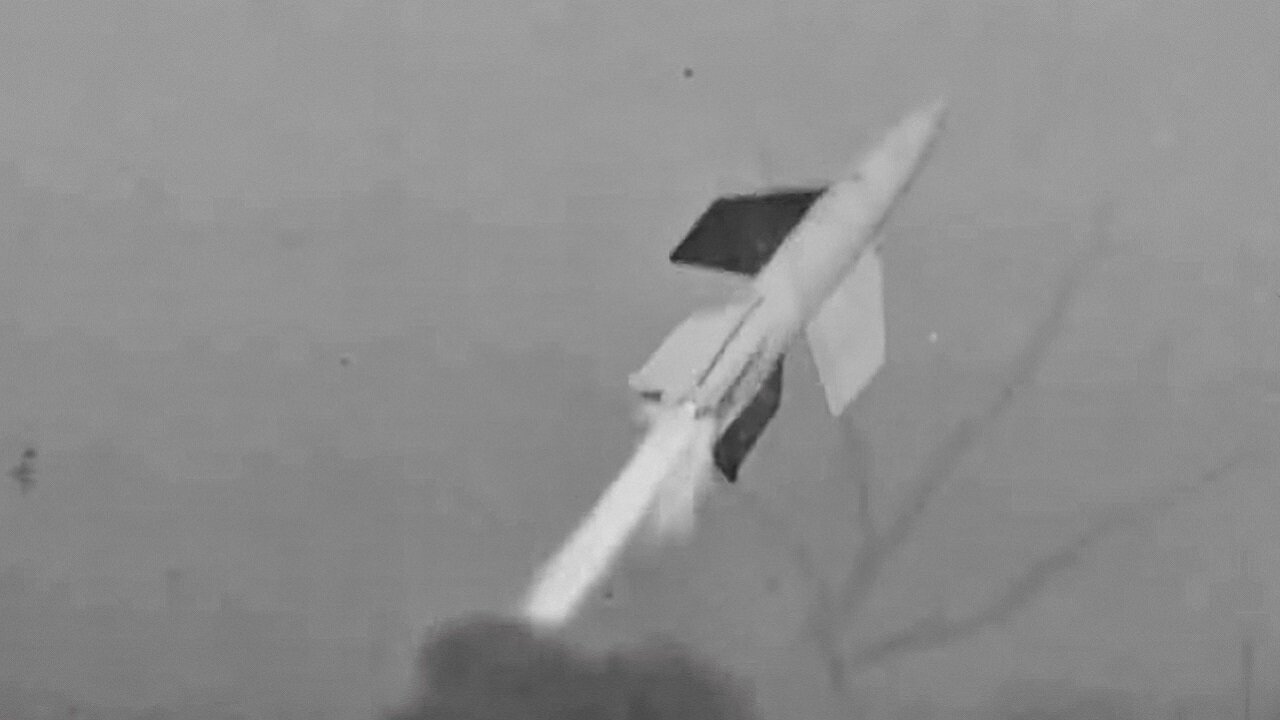V-2 (A4/A4b) experimental rocket launches
The V-2 (Vergeltungswaffe 2), with the technical name Aggregat 4 (A4), was the world’s first long-range guided ballistic missile. The missile, powered by a liquid-propellant rocket engine, was developed during the Second World War in Germany as a "vengeance weapon" and assigned to attack Allied cities as retaliation for the Allied bombings against German cities. The V-2 rocket also became the first artificial object to travel into space by crossing the Kármán line with the vertical launch of MW 18014 on 20 June 1944.
0:00 shows the failed G-1 launch on December 27th 1944 of the first A4b model which added wings to enable the missile to glide, potentially doubling its maximum range.
1:57 shows the successful and last G-3 launch of the A4b model on January 24th 1945. This reached 80 km altitude and 1200 m/s maximum velocity, then flew stably in supersonic flight. The automatic guidance system was designed to keep the missile on course in both supersonic and subsonic flight regimes. However, the wing broke off shortly after the beginning of the glide. This concluded work on the A4b; the increasingly chaotic situation in Germany prevented further flight tests.
-
0/2000
-
 2:06
2:06
hw97karbine
2 days ago60cm Karl-Gerät "Thor" and 80cm Schwerer Gustav bombarding Sevastopol in 1942
1.02K -
 LIVE
LIVE
Russell Brand
2 hours agoJews, Gorillas and Kanye West: DARK RUSSELL THURSDAY – SF580
13,004 watching -
 DVR
DVR
Sean Unpaved
1 hour agoGridiron Goverance & Future Stars: Fixing CFB, Flagg's Pro Potential & Brady's Raiders QB Impact
5.67K -
 LIVE
LIVE
CryptoWendyO
23 minutes agoBitcoin BULLRUN is back (WHAT YOU NEED TO KNOW)
509 watching -
 LIVE
LIVE
StoneMountain64
52 minutes agoKar98k Optic IS BACK after HDR Nerf 😭
168 watching -
 LIVE
LIVE
TheAlecLaceShow
1 hour agoTrump Makes Major Trade Deal with UK | FBI’s Historic Bust | Guest: Jim Pfaff | The Alec Lace Show
155 watching -
 1:05:18
1:05:18
Timcast
2 hours agoDemocrat Polls Hit NEW LOW, Anti-Trump Smears BACKFIRING, Trump Approval Is REBOUNDING
180K44 -
 1:56:39
1:56:39
Steven Crowder
4 hours agoTrump Announces Major Trade Deal: What This Means For The Global Trade War
376K217 -
![BREAKING: Bitcoin is BIGGER Than Google [$100K Triggers Short Squeeze] | EP 1240](https://1a-1791.com/video/fww1/bc/s8/1/V/U/M/I/VUMIy.0kob-small-BREAKING-Bitcoin-is-BIGGER-.jpg) LIVE
LIVE
Simply Bitcoin
2 hours ago $0.63 earnedBREAKING: Bitcoin is BIGGER Than Google [$100K Triggers Short Squeeze] | EP 1240
282 watching -
 LIVE
LIVE
The Charlie Kirk Show
1 hour agoThe First Trade Deal of Trump 2.0 + Exposing Planned Parenthood + AMA | Rose | 5.8.25
4,423 watching

0 Comments